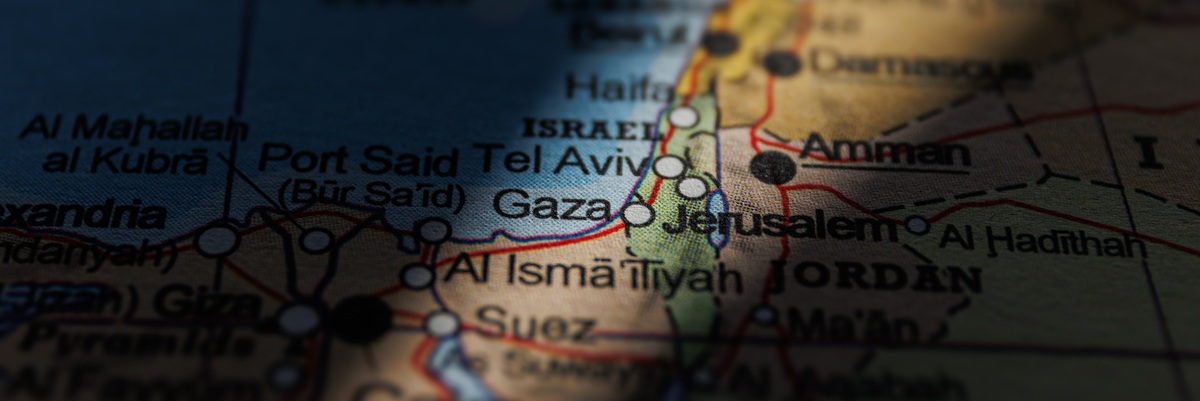Defense & Security
Netanyahu accelerates plans for total occupation of a starving Gaza

Image Source : Shutterstock
Subscribe to our weekly newsletters for free
If you want to subscribe to World & New World Newsletter, please enter
your e-mail
Defense & Security

Image Source : Shutterstock
First Published in: May.06,2025
May.19, 2025
The Israeli army seeks to mobilize 30,000 reservists for a new expansion of its offensive on Gaza. UN-affiliated organizations warn of famine and disease in an enclave where clean drinking water is scarce.
The Israeli security cabinet has approved a plan to intensify the operation in Gaza, which includes capturing or seizing additional areas across the Palestinian coastal territory and expanding the area controlled by the IDF. Government members, such as Finance Minister Bezalel Smotrich, are already using the term “occupation” to clarify the plans for Gaza.
Although Prime Minister Benjamin Netanyahu has not specified which parts of the territory are involved in the new escalation, anonymous military sources have claimed that the goal is to occupy the entire Gaza Strip. The idea put forth by the Zionist regime, in any case, is to seize the territory and not return it in the future. Hamas has rejected this plan and continues to pursue “a comprehensive agreement that guarantees the safety and protection of our people,” according to one of its senior officials.
The announcement includes the destruction of “all infrastructure above and underground,” according to Israeli Chief of General Staff Eyal Zamir. The meeting followed IDF orders to mobilize 30,000 reservists last Saturday. Israel is thereby increasing pressure on Gaza during the same month that U.S. President Donald Trump is expected to visit Saudi Arabia, Qatar, and the UAE, where he will present his colonization plans aligned with the wishes of the Tel Aviv regime.
The plan also entails a new forced displacement of hundreds of thousands of Palestinians to the south of Gaza, expected to last for months. The government of Netanyahu — who is considered a suspected war criminal by the International Court of Justice (ICJ) — faces internal resistance from the Hostage and Missing Families Forum, which has protested what they see as prioritizing territorial conquest over the return of prisoners captured by Hamas on October 7.
Fifty-nine people remain held by the Gaza government after Israel unilaterally broke the ceasefire on March 18. The Forum mentioned before, criticized the Gaza occupation plans, referring to them as the “Smotrich-Netanyahu Plan for the Sacrifice of Hostages,” according to a public statement.
The main debate within the security cabinet focused on whether to open routes for humanitarian aid — routes that have been closed since early March, two weeks before the ceasefire collapsed.
According to Israeli newspaper Haaretz, Itamar Ben Gvir — also subject to ICJ arrest warrants — argued for keeping all aid routes closed: “I don’t understand why we have to give them anything; they have enough food there. We should bomb Hamas’s food reserves,” the outlet quoted. The Chief of Staff called the idea “dangerous.” According to the same leaks, Ben Gvir also proposed “bombing food warehouses and generators.”
The International Criminal Court has reminded that blocking humanitarian aid may constitute a war crime. The Israeli government has leaked to the press that under the new escalation, humanitarian aid would be allowed in only through “international organizations and private security contractors.”
On Sunday, May 4, the Country Humanitarian Team (CHT), under the UN Office for the Coordination of Humanitarian Affairs (OCHA), reported that for nine weeks Israeli authorities had blocked all supplies from entering Gaza: “Bakeries and community kitchens have shut down. The warehouses are empty. Children are starving.”
Two days earlier, UNICEF Executive Director Catherine Russell expanded on the critical situation in Gaza: “In the past month, more than 75% of households have reported increased difficulty accessing water. Families don’t have enough to drink, cannot wash their hands when needed, and often must choose between showering, cleaning, or cooking,” Russell said in a statement. UNICEF also warned of the prevalence of acute watery diarrhea, especially dangerous for children: “Over 9,000 boys and girls have received treatment for acute malnutrition,” the organization added.
At the end of April, during ICJ hearings related to South Africa’s case against Israel, Claire Nicolet, Head of Emergencies at Médecins Sans Frontières (MSF), stated that “Israeli authorities are not only using aid as a bargaining chip but also as a weapon of war.”
Since October 7, 2023, 52,567 Palestinians have been killed and 118,610 injured as a result of Israeli attacks, according to the Gaza Health Ministry. Of those fatalities, 2,459 occurred after the March ceasefire was broken.
First published in :

Part of El Salto Magazine
Unlock articles by signing up or logging in.
Become a member for unrestricted reading!